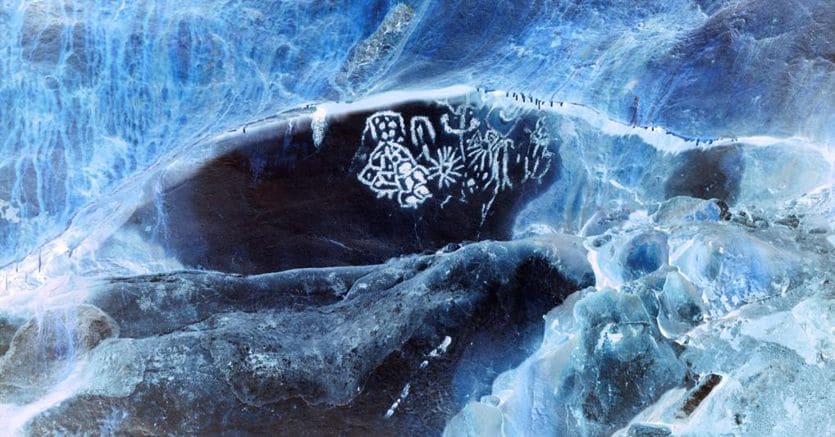Listen to the audio version of the article
Among the thousand proposals in Venice during the Biennale, you happen to come across a very particular exhibition, which lasts just ten days (from 18 to 27 April), open only after sunset, with free entry but only by reservation, to see ” casts of light from the darkness”.
“Futuroremoto” occupies the main floor of Palazzo Erizzo, home of the Foundation dedicated to the paleontologist Giancarlo Ligabue. His son Inti Ligabue, president of the Foundation, had long been pursuing the dream of opening the magnificent palace on the Grand Canal to the public as an exhibition venue, and he succeeded in these very special circumstances, a sort of dress rehearsal for what in 2025 will be the “Palace of Arts”.
Images from “Futuroremoto” on display in Venice
Photogallery10 photos
View
Domingo Milella
It all started from the fortunate meeting between Inti Ligabue and the artist Domingo Milella, who has been carrying out very personal research on rock paintings for a decade. Milella (Bari, 1981) works with a large analogue view camera which she uses in the caves of some of the great sanctuaries of prehistoric painting in Europe: El Castillo, Chufin, La Pasiega (Spain), Pech-Merle, Lescaux (France), The Cave dei Cervi (Italy).
An uncomfortable, exhausting job, in the bowels of the earth, in the deepest darkness, which requires hours of patient exposure to capture those primordial signs that some human beings decided to leave as traces of their passage, declarations of existence, or perhaps apotropaic signs, part of a ritual that reconnected man to a universe that was totally unknown to him but of which he was also part.
Erizzo Palace
The ten large format photographs that make up the exhibition (almost all unpublished), created with this technique which brings us back to an essential photography, were exhibited on the main floor of Palazzo Erizzo, where even the walls, for the occasion, were stripped bare and brought back to the original cocciopesto. The effect is that of a cave in which very powerful images emerge from the darkness, coming from an archaic past but which we also feel close to, because they speak to us of the essence of the human being, of instincts, feelings, primordial passions, of the fear of death , of the search for the divine, of amazement in the face of the cosmos.
They are images of animals, scenes of daily life, symbols or abstract signs, some engraved on stone, others painted with guano or mineral pigments reduced to powder or sprayed with bone straws, leaving prints of hands and fingers in the negative, like of stencils from 40,000 years ago. They no less become evidence of the unfathomable, traces of a dimension that goes beyond space and time and of which we know almost nothing, just as we know nothing about the future.
